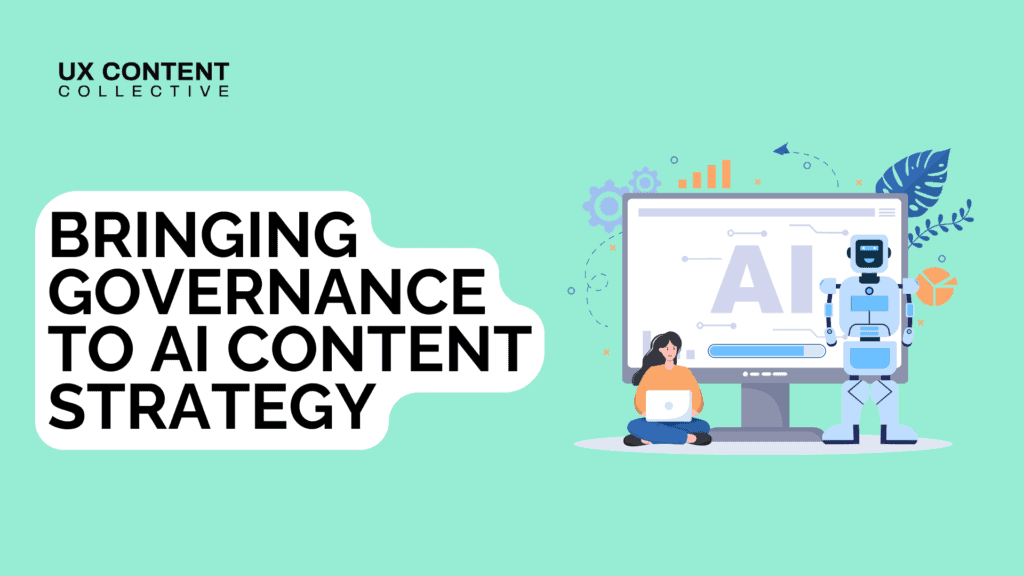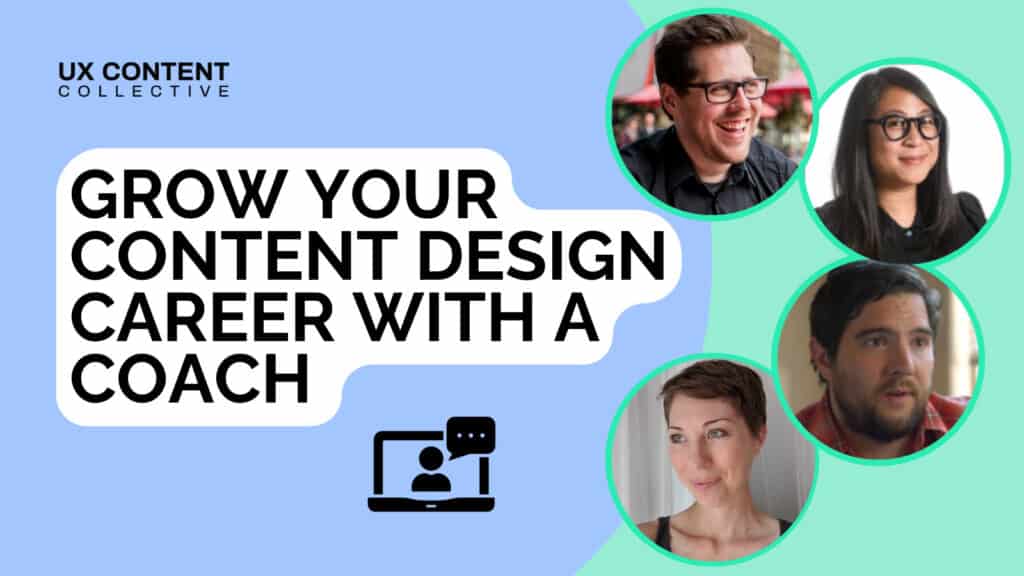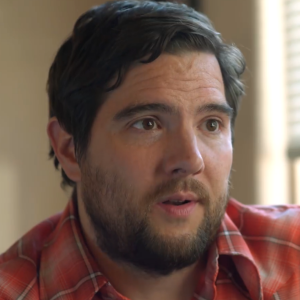

This panel was originally recorded via Zoom webinar and transcribed using Sonix.
Jenny:
I love this question because it surprised me. I think the question that feels like it comes up a lot is, “Is this normal what I’m experiencing? And am I doing okay?” I feel like the people that I’ve worked with often are people who are already working in the industry, maybe have like one or two years of experience. There’s both a sense of, “Am I doing well enough? Am I doing okay in this job?” And also, “Here are some of the things I’m seeing. Is this normal?” And so some of that comes from imposter syndrome. Like we all have it. It’s all very, very, very prevalent and very common. But I think there is also a sense of, “I have this one perspective and this one little design team or this one organization. Is this what it’s like everywhere?” So that’s that feels to me like a theme that I’ve seen quite a lot.
Laura:
One of the more common questions that I’ve gotten is there are folks who are making the transition to UX writing and content design, and people are getting calls for interviews and they have interviews coming up and they have a scenario: How do I show work if I haven’t ever done the job before? So you’re stuck between a rock and a hard place. Maybe the person does have writing experience, but they know they need to sell it to an audience that’s interested in their UX writing skills. And another one, which made me kind of sad, but I can see how this would be something that’s swirling around in your mind, is how can I be taken seriously for a role I’ve never had? And so to Jenny’s point about imposter syndrome, it’s difficult to sort of channel that, “Yes, I can do this job.” And some of the coachees that I speak with, those are some of the top questions that I hear. But usually, we work through that in a portfolio review and we’ll get very, very specific in the samples they have or samples that they plan to show in an interview setting just so they know how they can speak to that work in that particular interview setting.
Mark:
To piggyback on what Jenny and Laura said, it’s almost the most common unasked question, which is, “How do I parlay my prior writing skills and copywriting skills? How do I sell those to a hiring manager?” The overwhelming majority of the coaching sessions that I have facilitated have consisted of people who have a couple of years of experience writing professionally, just in a different capacity, not in UX writing or content design. They have value and they have skills in writing, but they just can’t quite seem to figure out how to break in and how to make themselves relevant in that new kind of language, if you will. It’s not often explicitly asked, but it’s the most frequent pain point that crops up in my sessions.
Mark:
I think there are two ubiquitous mistakes that I see. For example, your LinkedIn profile, your resume and your portfolio are all saying different things. You know, you’re talking about a project on your LinkedIn and on your resume, but it’s not represented on your portfolio. I’ve seen different job titles on resumes and LinkedIn profiles and stuff like that. And for me personally, that’s a that was a big issue. It’s important to have one brand, if you will, extend across everything. I want the hiring manager who’s consuming my materials, my portfolio, my resume, my LinkedIn, for it to be one fluid experience. And I think when it’s not, I think you’re doing yourself an injustice and it can come off a little iffy or you might lose some trust with the hiring manager.
The other issue that I see is, and this is to go back to something we were talking about earlier is, and I love this, this is my favorite part about doing a portfolio review or a resume review, is coming across one throwaway blurb and asking, “What’s that about?” And then they’re like, “Well, you know, I shaped the product roadmap and created a content style guide,” and you’re like, “Whoa, we need to unpack this. This is so huge.” So I think at the heart of both of those issues is that some people are not comfortable with selling themselves. And so that’s fine. You know, I’m more than happy to be your cheerleader for you and show you how to do that.
Jenny:
I feel like the two mistakes that I often see, one is not talking about impact. People tend to say, well, this is what I did. Like, this was what I was responsible for. But you have to read between the lines to understand, well, why did it matter that you were responsible for that? What was it that you contributed that had an influence on how this product was shaped or how your grew your audience and things like that? I often just recommend having one bullet point for every one of your roles that just says impact colon. And then you’re able to say specifically what you were able to influence. And then the other thing I often see is resumes tend to be really long. And as if you’re going for a content design or UX writer position, one of your key skills should be being able to write things concisely. And so if your key writing example is really wordy, then it’s an indicator that maybe this is a skill that you haven’t fully developed. That’s one of the key things that I say is cut your resume in half. What are your key points? This is practice for the work that you’re going to be doing in the future.
Mark:
So first of all, let me preface this with there’s a ton of free information and a lot of it is fantastic. There’s a lot of solid resources out there. So make yourself available to all of that and glean all the helpful advice that you can. What differentiates a one-on-one coaching session from a great Medium article or a YouTube video is having someone with the ability, based on my years of experience, to be able to see that five-word blurb in somebody’s resume and pinpoint the value in that and know that there’s a lot more that needs to be unpacked there. And that critique is a skill that is based on a decent amount of experience. And so that isn’t what you’re going to find in a blog article or a how-to or something like that. And again, that’s not to downplay any of that. I think there’s a ton of valuable information out there. But if you have everything as good as you think you can possibly get it, then I think that’s a great place for a coach to come in and fine-tune your resume and portfolio to get it to the next level.
Patrick:
Yeah, 100%. And also think one of the benefits of asking someone who has been in the industry for a while is that person will have specific experience in an area where you might want to go. So on this panel, we have people from Microsoft and Spotify. If you want a job at those places, it’s valuable to ask someone who’s been there before to look for things in your resume or portfolio that will help you get there.
Laura:
Yes, I have one very unique scenario. So I met with somebody, I think it might have been last week or two weeks ago, and she is new to content design and got asked for an interview. She was going into the portfolio review panel. So, there were several people who are going to be in this interview. And she had never even built a portfolio before! She had writing samples but hadn’t built a portfolio. So she built, again, as complete as she thought it should be. She came very prepared with specific questions on what to even expect in the interview. And we went through all those things. She sent me her portfolio the next day, I gave her some very specific feedback, and then she went to the interview. The very next day, she got an offer and she started either today or next week. Now, that moved very quickly. I would say that’s an anomaly. I think most companies take a little bit longer. But just the fact that she was able to pull together her writing samples, be able to speak to them, pull in elements of storytelling to tell her story. I think that was really great. And they moved very quickly and she was able to get that job. And yeah, she just asked a lot of really good questions during our session. Yeah. And so she, she got the job.
Jenny:
The success stories are always really wonderful. And I agree that we can’t always take credit for those things. Because in a lot of ways, we’re just helping people sort of get out of their own way a little bit and tell their own story better. Two examples for me come to mind. The first is that I met with someone who had felt really stuck, that she felt like her resume was the thing that wasn’t getting her through the door. She had gone through the interview loops at Meta and then was stagnating and wasn’t actually getting a placement on a product team. She’d also get recruited, but then would hit these dead ends. And so we looked really closely at her resume together and we talked about some of the things I’ve already talked about, like cutting in half and adding impact bullet points. She’d also had a lot of really interesting and rich, relevant experience from like 15 or 20 years ago. And then there was a gap in her resume and then she had some a last few years of more relevant experience. And so we talked about, how do you talk about experience that may now feel like out of date? Without scaring people away? How do you talk about sort of gaps in resumes? And so we have some strategies for that.
And she followed up, I think maybe a week or two later, and said that her new resume had sort of unlocked the product placement team at Meta. And so she’d gotten an offer. She’d also already started getting calls back using this new resume. So that was really encouraging to hear, because, again, it was like all of this is the same person with the same experience. But framing the story in different ways was really what she needed to sort of unlock things.
And then the other thing, and this kind of comes back to an earlier question you’d ask Patrick around, like, why does it help to have a one-on-one coach? And I feel like sometimes people show up with, they think they’re asking one question, you know. “I’m about to start a new job and what are the things that I should do in the first 30 days?” And what sort of unfolds over the course of an hour as we talk through that, is that actually this person maybe has had some really personal experiences that have affected how they’re thinking about this new job. Like it almost, I don’t want to call it a therapy session because I’m definitely not a clinical therapist. I think there’s a standard idea of how these roles come about and how we start new jobs and how we do in jobs. And everyone has also a personal element of, “I think my manager really didn’t like me in my last job.” And so I feel like sometimes my role is just to validate and help people see that their unique path and their unique story is valid and is a true experience and then help build up again that confidence of saying, “Hey, it sounds like from what I’ve seen, like you are doing really good work. You know, you’re clearly really smart and you’re really capable. And so how do you sort of move on from that?” And so I had a coaching session with someone who sort of had that experience of coming in with a lot of this, I would say, kind of baggage of having had a really negative experience in a previous role and wondering how much of that was her versus how much of that was the company in the organization and the culture and the team. And so I followed up with her maybe a month after she’d started the new job, and she said it was so different and she felt so much better and it was so good to be able to walk into that new role with this sense of confidence.
Patrick:
I had one coachee who had sent in a resumé and a portfolio, and the company had declined her for an interview. And we looked at her portfolio and we looked at the projects she had. And she was asking me, “Oh, what projects can I put in my portfolio that will help me get an interview?” And I’m looking at this portfolio and I said, “Well, actually the projects you’ve got here are not the issue. The issue is that you haven’t framed the projects here by way of what’s the context, what’s the problem, what’s the process, what’s the solution.” And once we started working through these projects and framing them that way, she was much more confident about describing them and describing impact. She actually went back to the company that had declined her for an interview and said, “Look, I’ve updated my portfolio. Would you mind taking another look?” And she got an interview, not by changing the projects that she had done, just by reframing them. So I always love that story because sometimes people say they don’t have enough experience. But it’s not just about experience. It’s about framing things the correct way.
Patrick:
Which is a great question. And I’m sure anyone who’s interviewed for a large company would be familiar with the several rounds you have to go through. I’ll add my thoughts and open it up to the panel. But I know what it’s like to have to go through several different rounds. And it’s made harder by the fact that, number one, they’ll often ask you to do these massive projects, take on projects, which we could do a whole other webinar on that, and that can be an issue. And then a lot of the time, these companies don’t necessarily offer feedback. So you won’t get it, whether it’s good or bad, you just won’t get feedback and they’ll say, Sorry, we can’t. We won’t be going forward.
One thing that I find really helpful is to take the material that you’ve created, whether it’s for a presentation or something, go to colleagues or peers, not necessarily at the company where you work. There are lots of communities online like the Content + UX Slack Group, UX Content Collective has a Slack group, there’s the LinkedIn UX Writers & Content Design Group. Just asking either in a group or an individual basis if they would mind looking at and providing some feedback? I find that even though the company may not give you that feedback, you may then get other people to weigh in. So you can get hints as to what might be going right or what they might like.
Mark:
The job-hunting process and the interviewing process is grueling and it sucks. Getting rejected is no fun. And I’ve had a few that really bruised the ego a bit when I was sure I was a shoo-in. What I found has helped me is a couple of things. Number one, keep a lot of irons in the fire. A lot of it is a numbers game, and so I don’t care if I’m looking for a job, I’m looking for a job, and I don’t care what company I’m interviewing with. Unless they’ve offered me a position, I’m still looking for a job and I’m sending out my resume.
So having a lot of irons in the fire does a lot to drain that stock of anticipation in one company, which I’ve actually found is helpful in the interview process as a whole. The other thing is, and this is going to sound cheesy, but it’s a lot of self-care. Knowing you’re not this company and your self-worth does not hinge on whether or not a company hires you. You know you’re damn good at what you do. And if they can’t recognize it, then that’s their problem. And I’m going to be even more cheesy. I really do believe that rejection is protection. I haven’t gotten roles at companies and I look back and I’m glad I didn’t get that role because I’m so happy where I’m at right now and I don’t think it would have been the case otherwise.
Patrick:
I love the word dazzle. Certainly, everyone’s going to be different. But one thing that, Jenny, that you mentioned a few times in this session is impact. And I think for me, not just in the coaching sessions I’ve had, but just in talking with various people in the industry, one thing that’s often missing from people’s presentations is impact. I’d love to hear you speak a little bit about that.
Jenny:
I like exactly what you just said, right? It’s that you want to know that this person’s presence made a difference. And I think too, the other thing that I have been sort of consistently dazzled by, is realness. And I don’t know how to better pinpoint that. People follow a very standard portfolio presentation format, there’s kind of a formula, right? And you can go through and check off every box. But I feel like the people or the candidates that I’ve always been really impressed by and really connected with are the people who sort of slow down at certain moments and almost take a step out of the process. They are not explicitly saying this, but essentially implying that we’re all still people here, we’re all still humans. At the end of the day, the project I was working on, this was about people and always bringing it back to the idea that we’re building for humans. And so how do we keep those people front and center throughout the process and not just in a kind of like user-centered design sort of way or even human-centered design sort of way, but really. But really being open and real and honest.
Patrick:
So I don’t want to downplay it because this is a challenge. Start by looking at each bullet point they are asking for and identify what they’re asking for and try and find as much equivalent experience as you can.
For example, they might ask, “We need someone who’s conducted a content audit of strings in a desktop software.” You may not have done a content audit for that specific thing, but you may have done a content audit for something else. So put that forward and say that you’ve done a content audit process. They might ask something like, “Have you had any experience within a design team?” You may not specifically, but have you worked within a team for a website or something that you can point to and say, “I’ve done something equivalent.” And certainly, I’ve seen times where people try to overreach a little bit and it doesn’t always work. But look at it from a bullet point by bullet point process.
Laura:
Senior can mean so many different things at different organizations. And so yeah, it really takes just taking a look at the job description to see what they’re calling for. They may need somebody who is a really good collaborator and someone who is very seasoned in that. So if you can speak to that in your experience, but you don’t have the UX writing skills, but you’re teachable and you can show somebody that in an interview setting. I mean, that’s exactly what that organization wants.
I’m sure you all have seen that meme where it says, “Entry-level. Needs 3 to 5 years of experience.” And I hear a lot of coachees join sessions and they feel that. Take a look and see what can you bring to the table and what you can parlay into that role that you’re applying for. And I think that you’ll definitely find your way that way because senior doesn’t automatically mean ten plus years of hands-on UX writing experience. It can mean a lot of things. And I bet you everyone in this room has something that they can bring to the table if they’re applying for a role that they may not seem senior on its face, but they have some transferable skills for sure.
Mark:
A lot of the time, it’s a question of, “Do I have prior writing experience.? How do I frame that in a way that makes sense to a UX writing or a content design hiring manager?” But sometimes it’s, “I don’t really have any writing experience on paper. How do I break into the UX writing field?” And in which case, I always suggest freelance work. The fastest way to learn skills to build a portfolio is freelance work.
Jenny:
And to build on that too, I’ve also recommended short-term volunteer projects. If you have a local nonprofit that you really love and are passionate about, volunteering to do some UX writing for their organization can be a great way to get experience. You often have partners that are really excited to work with you and implement some of your changes. And the other thing that I would say is that startups are also a really good place to look. Job postings are often more aspirational than anything else, and so I know that a lot of times, people who are in small startup organizations recognize that they’re going to bring someone in and they’re going to have to do a lot. They’re going to have to wear a lot of hats. You ideally want someone who’s really experienced but really experienced people are maybe not that excited about coming to a startup where they’re going to have to work really hard for less pay than they’re getting at a big tech company. And so I think there’s an opportunity there. If you’re hungry and energetic and you can sell yourself and learn how to frame your story, I think startups are a great way to get past the senior title.

Laura Lopez, Spotify
Laura is a self-described word nerd working as a UX writer, content designer, and content strategist. She’s passionate about mentoring others, making UX content more accessible, and advocating for the value of content within design. She’s certified in interaction design and human-centered design and loves developing best practices to help content, product, and design teams work together more effectively

Jenny Williams, Microsoft
Jenny is currently a senior UX writer on Microsoft’s Ethics & Society team, working at the intersection of ethics and artificial intelligence. In collaboration with her amazing colleagues, she does content design and storytelling to help tech builders make products that optimize for human dignity and positive, sustainable futures. Before Microsoft, she spent three and a half years at Google, with a strong focus on accessibility. She also teaches content strategy and UX at the University of Washington.

Mark Feigenbutz, ServiceNow
From stand-up comedy to copywriting, branding to conversation design, Mark has been engaged in the creative process for the better part of his life. In his previous role as a Sr. UX Architect (Conversation Designer), he supported and influenced the continuous design of Allstate’s UX, UI, and CX conversational touchpoints. In his current role as a Sr. Content Designer at ServiceNow, he’s part of the Design Innovation team, focusing on conversational interfaces.
Book one-on-one time with Jenny Williams, Laura Lopez, Mark Feigenbutz, and more coaches!
Get our weekly Dash newsletter packed with links, regular updates with resources, discounts, and more.
